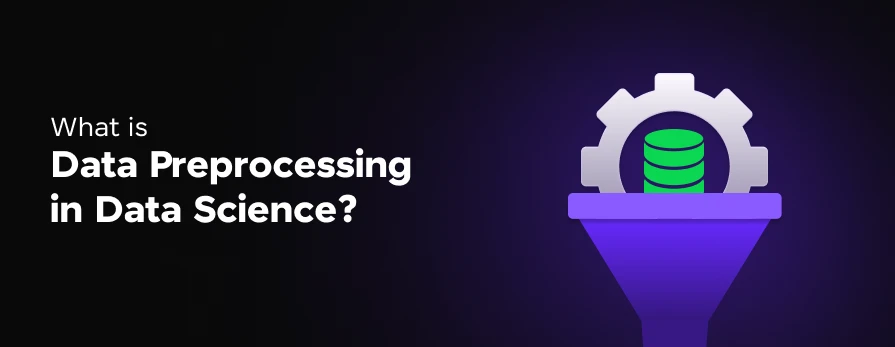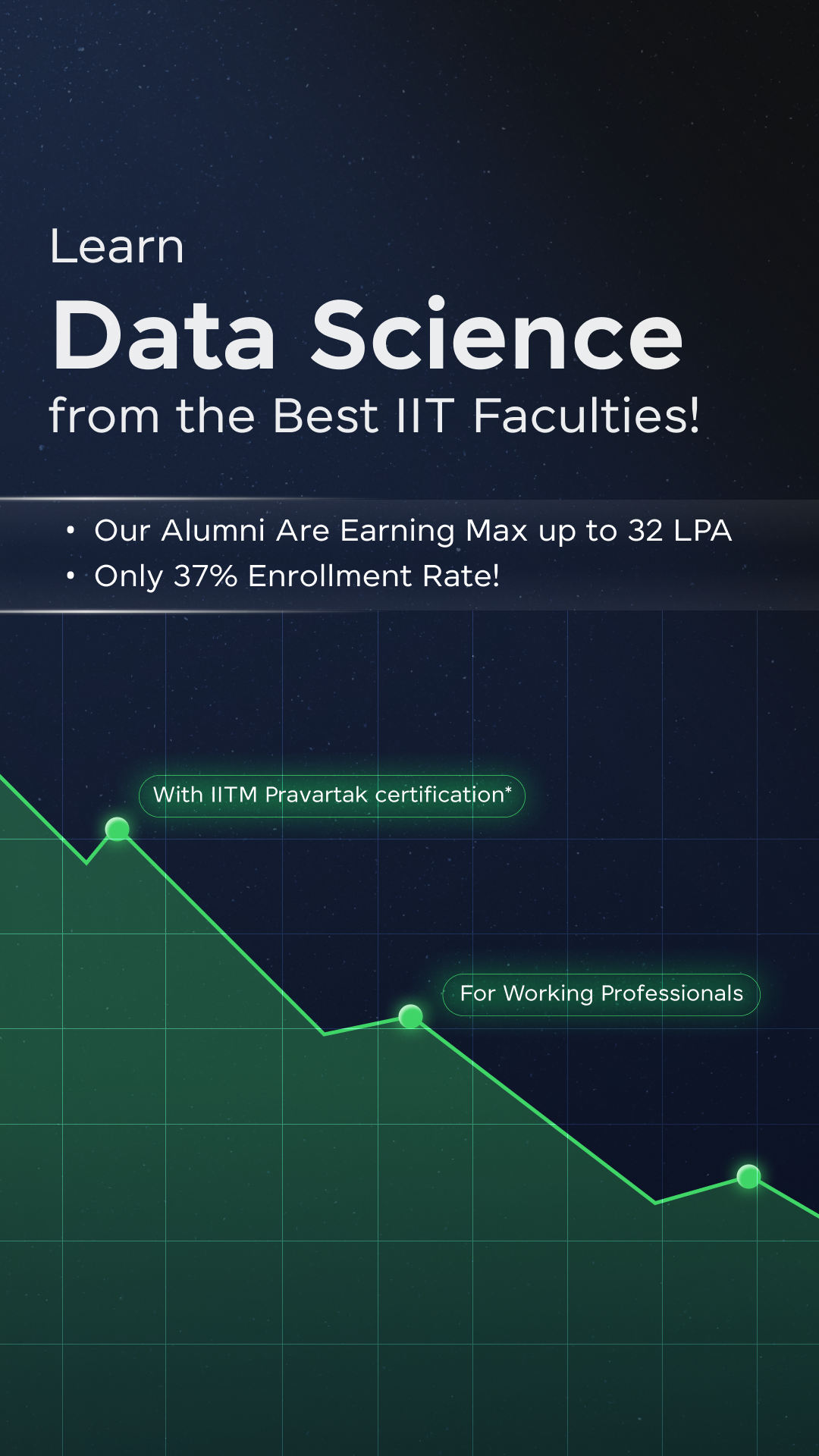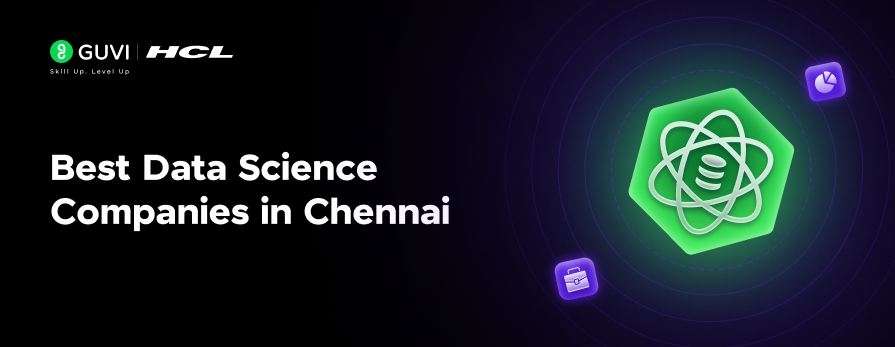
What is Data Preprocessing in Data Science?
Sep 21, 2024 6 Min Read 2142 Views
(Last Updated)
In the ever-evolving field of data science, the quality of the insights you derive is directly proportional to the quality of the data you use. Raw data, as it is initially collected, is often messy, incomplete, and inconsistent. This is where data preprocessing comes into play.
Data preprocessing is an important step that involves transforming raw data into a clean and usable format, ensuring that the subsequent analysis is both accurate and meaningful.
In this blog, we’ll explore the concept of data preprocessing in detail, discussing its importance, the steps involved, and the tools and techniques that can help streamline the process. Understanding data preprocessing is essential for achieving robust and reliable results. Let’s begin!
Table of contents
- What is Data Preprocessing?
- What is Data Preprocessing in Data Science?
- Steps Involved in Data Preprocessing
- Tools and Techniques for Data Preprocessing
- Best Practices in Data Preprocessing
- Common Challenges and How to Overcome Them
- Conclusion
- FAQs
- Why is data preprocessing important in data science?
- What are the common steps involved in data preprocessing?
- Which tools and libraries are commonly used for data preprocessing?
What is Data Preprocessing?
Data preprocessing is an essential step in the data analysis and machine learning pipeline. It involves cleaning, transforming, and organizing raw data to make it suitable for further analysis or modeling. The main goals of data preprocessing are:
- Improving data quality
- Ensuring consistency
- Making the data more manageable
- Preparing the data for specific analytical or modeling techniques
Key aspects of data preprocessing include:
- Data cleaning: Handling missing values, removing duplicates, and correcting errors.
- Data transformation: Scaling, normalization, encoding categorical variables, and feature engineering.
- Data reduction: Selecting relevant features and reducing dimensionality.
- Data integration: Combining data from multiple sources.
- Data formatting: Ensuring consistent data types and structures.
Proper data preprocessing is important for obtaining accurate and meaningful results from data analysis and machine learning models.
Before we move into the next section, ensure you have a good grip on data science essentials like Python, MongoDB, Pandas, NumPy, Tableau & PowerBI Data Methods. If you are looking for a detailed course on Data Science, you can join GUVI’s Data Science Course. You’ll also learn about the trending tools and technologies and work on some real-time projects.
Additionally, if you want to explore Python through a self-paced course, try GUVI’s Python course.

Now, let’s explore data preprocessing in the context of data science.
What is Data Preprocessing in Data Science?
Let’s explore data preprocessing in data science.
Steps Involved in Data Preprocessing
Data preprocessing is not a single operation but a series of steps, each addressing different aspects of data quality and usability. Let’s break down these steps:
a) Data Collection and Import
The first step in any data preprocessing pipeline is gathering the necessary data. This may involve querying databases, accessing APIs, scraping websites, or importing data from various file formats like CSV, JSON, or Excel. It’s important to ensure that you have the right permissions and comply with relevant data protection regulations.
b) Data Exploration and Profiling
Before getting into cleaning and transformation, it’s essential to understand your data. This involves examining the structure of your dataset, checking data types, looking for patterns, and identifying potential issues.
c) Data Cleaning
This step involves handling missing data, removing duplicates, correcting errors, and dealing with outliers.
- Handling missing data: You might choose to drop rows with missing values, fill them with a specific value (like the mean or median), or use more advanced imputation techniques.
- Removing duplicates: Duplicate records can skew your analysis and should be removed.
- Correcting errors: This might involve fixing typos, standardizing formats (e.g., date formats), or correcting impossible values.
- Dealing with outliers: Outliers can be legitimate extreme values or errors. You need to investigate them and decide whether to keep, modify, or remove them.
d) Data Transformation
This step involves modifying the data to make it more suitable for analysis or modeling. Common transformations include:
- Normalization or standardization: Scaling numerical features to a common range.
- Encoding categorical variables: Converting categorical data into numerical format.
- Feature engineering: Creating new features from existing ones.
- Handling skewed data: Applying transformations like log or square root to make the distribution more normal.
e) Data Reduction
For large datasets, it might be necessary to reduce the volume of data while preserving as much information as possible. This can involve:
- Feature selection: Choosing the most relevant features for your analysis.
- Dimensionality reduction: Using techniques like Principal Component Analysis (PCA) to reduce the number of features.
- Sampling: Working with a representative subset of your data.
f) Data Validation
The final step is to validate your preprocessed data to ensure it meets the requirements for your analysis or modeling task. This might involve:
- Checking data types
- Verifying value ranges
- Ensuring all necessary features are present
- Checking for any remaining missing values or inconsistencies
These steps form the core of the data preprocessing pipeline. However, the specific techniques and their order may vary depending on the nature of your data and the requirements of your data science project. In the next section, we’ll explore various tools and techniques that can assist in this important process.

Tools and Techniques for Data Preprocessing
Data preprocessing is a complex task that requires a combination of powerful tools and sophisticated techniques. In this section, we’ll explore some of the most popular and effective resources available to data scientists for preprocessing their data.
a) Python Libraries
Python has become the de facto language for data science, largely due to its rich ecosystem of libraries. Here are some essential Python libraries for data preprocessing:
- Pandas: The go-to library for data manipulation and analysis in Python. It provides data structures like DataFrames and Series, and functions for reading, writing, and transforming data.
- NumPy: Fundamental for numerical computing in Python. It provides support for large, multi-dimensional arrays and matrices, along with a collection of mathematical functions to operate on these arrays.
- Scikit-learn: While primarily known for machine learning, scikit-learn offers excellent preprocessing tools, including scalers, encoders, and imputers.
b) SQL for Data Preprocessing
While Python is excellent for in-memory data processing, SQL is often more efficient for preprocessing large datasets stored in databases. SQL can perform many preprocessing tasks directly on the database, reducing data transfer and using database optimization.
c) Apache Spark for Big Data Preprocessing
Apache Spark has become an important tool when dealing with truly big data. Spark can distribute data processing across a cluster of computers, allowing for efficient preprocessing of massive datasets.
d) Automated Machine Learning (AutoML) Tools
AutoML tools can automate much of the data preprocessing pipeline, including feature selection, encoding, and scaling. While they shouldn’t replace a thorough understanding of preprocessing techniques, they can be valuable for rapid prototyping or when dealing with standard datasets.
Examples of AutoML tools include:
- AutoSklearn: An automated machine learning toolkit based on scikit-learn.
- H2O AutoML: Provides automatic feature engineering and model selection.
- TPOT: An automated machine learning tool that optimizes machine learning pipelines using genetic programming.
Also Read: Top 9 Interesting MLflow Project Ideas to Explore in Data Science
e) Custom Preprocessing Functions
While libraries and tools cover many common preprocessing tasks, you’ll often need to create custom functions for domain-specific preprocessing. These might include:
- Text preprocessing for natural language processing tasks
- Image preprocessing for computer vision projects
- Time series data preprocessing for forecasting tasks
These tools and techniques form the backbone of data preprocessing in modern data science. The choice of tool often depends on the size of your dataset, the complexity of your preprocessing needs, and your familiarity with different technologies.

Best Practices in Data Preprocessing
Effective data preprocessing is as much about following best practices as it is about using the right tools. Here are some key principles to guide your preprocessing efforts:
a) Understand Your Data Before Preprocessing
Before you start cleaning or transforming your data, take the time to thoroughly understand it. This includes:
- Examining the data types of each feature
- Checking for missing values and understanding why they’re missing
- Looking at the distribution of numerical features
- Examining the cardinality of categorical features
- Identifying potential outliers
b) Document Your Preprocessing Steps
Preprocessing can involve many steps and decisions. Documenting these thoroughly is important for reproducibility and for helping others (or your future self) understand your work.
c) Handle Missing Data Carefully
There’s no one-size-fits-all approach to handling missing data. The appropriate method depends on why the data is missing and how much is missing. Options include:
- Dropping rows or columns with missing data (if the amount is small)
- Imputing missing values with mean, median, or mode
- Using more advanced imputation techniques like KNN or regression imputation
Always consider the potential impact of your chosen method on your analysis.
d) Be Cautious with Feature Engineering and Selection
While feature engineering can greatly improve your model’s performance, it’s important to do it thoughtfully:
- Don’t create features that leak information about your target variable
- Be wary of creating too many features, which can lead to overfitting
- Use domain knowledge to guide your feature engineering
For feature selection:
- Consider the interpretability of your model when selecting features
- Use multiple methods for feature selection (e.g., correlation analysis, mutual information, feature importance from tree-based models)
- Validate the impact of feature selection on your model’s performance
e) Handle Categorical Variables Appropriately
The method you use to encode categorical variables can significantly impact your model’s performance:
- Use one-hot encoding for nominal categorical variables with low cardinality
- Consider ordinal encoding for ordinal variables
- For high cardinality categorical variables, consider techniques like target encoding or hash encoding
f) Be Mindful of Data Leakage
Data leakage occurs when your model has access to information it shouldn’t have during training. This can lead to overly optimistic performance estimates. To prevent leakage:
- Perform all preprocessing steps within cross-validation loops
- Be cautious when using future information (e.g., in time series data)
- Don’t use your target variable to create features unless you’re very careful about how you do it
By following these best practices, you can ensure that your data preprocessing is thorough, effective, and aligned with the needs of your specific project ideas. In the next section, we’ll discuss common challenges in data preprocessing and strategies to overcome them.

Common Challenges and How to Overcome Them
Data preprocessing, while important, is often fraught with challenges. Here are some common issues data scientists face during preprocessing and strategies to address them:
a) Dealing with Imbalanced Datasets
Challenge: In many real-world datasets, especially in classification problems, classes are not represented equally. This can lead to biased models that perform poorly on minority classes.
Solutions:
- Oversampling minority classes (e.g., SMOTE – Synthetic Minority Over-sampling Technique)
- Undersampling majority classes
- Using class weights in the model
- Generating synthetic samples

b) Handling High-Dimensional Data
Challenge: High-dimensional data can lead to the “curse of dimensionality,” making models prone to overfitting and computationally expensive.
Solutions:
- Feature selection techniques (e.g., correlation analysis, mutual information)
- Dimensionality reduction (e.g., PCA, t-SNE)
- Regularization in the model (e.g., Lasso, Ridge regression)
c) Dealing with Time Series Data
Challenge: Time series data often requires special preprocessing techniques to handle seasonality, trends, and autocorrelation.
Solutions:
- Decomposing time series into trend, seasonality, and residuals
- Creating lag features
- Using rolling statistics
- Differencing to make the series stationary

d) Handling Text Data
Challenge: Text data is unstructured and requires specific preprocessing techniques to convert it into a format suitable for machine learning models.
Solutions:
- Tokenization
- Removing stop words and punctuation
- Stemming or lemmatization
- Creating numerical representations (e.g., bag-of-words, TF-IDF, word embeddings)
e) Handling Missing Data in Production
Challenge: In a production environment, you may encounter missing values that weren’t present in your training data.
Solutions:
- Design your preprocessing pipeline to handle potential missing values
- Use robust imputation methods that can handle new categories
- Regularly update your preprocessing pipeline with new data
f) Dealing with Outliers
Challenge: Outliers can significantly impact the performance of many machine learning algorithms, especially those based on distance calculations.
Solutions:
- Identify outliers using statistical methods (e.g., Z-score, IQR)
- Decide whether to remove, cap, or transform outliers based on domain knowledge
- Use robust algorithms that are less sensitive to outliers
g) Handling Concept Drift
Challenge: In production, the relationships between features and the target variable may change over time, a phenomenon known as concept drift.
Solutions:
- Implement monitoring systems to detect changes in data distribution
- Regularly retrain models on recent data
- Use adaptive learning algorithms that can adjust to changing patterns
By understanding these common challenges and implementing appropriate solutions, you can significantly improve the robustness and effectiveness of your data preprocessing pipeline.
Kickstart your Data Science journey by enrolling in GUVI’s Data Science Course where you will master technologies like MongoDB, Tableau, PowerBI, Pandas, etc., and build interesting real-life projects.
Alternatively, if you would like to explore Python through a Self-paced course, try GUVI’s Python certification course.
Also Read: 10 Best Data Science Online Courses for Beginners | 2024
Conclusion
Data preprocessing is a critical step in any data science project, often determining the success or failure of the entire endeavor. By understanding the various techniques available and following best practices, data scientists can significantly improve the quality of their data and, consequently, the performance of their models.
As the field of data science continues to evolve, staying updated with the latest preprocessing techniques and tools will remain important for success in this dynamic and exciting field.
FAQs
Why is data preprocessing important in data science?
Data preprocessing is important because raw data is often messy, incomplete, and inconsistent. It involves cleaning, integrating, transforming, and reducing data to ensure it is of high quality.
Without preprocessing, any analysis or machine learning model could produce inaccurate results due to errors, missing values, duplicates, and outliers.
What are the common steps involved in data preprocessing?
The common steps in data preprocessing include data cleaning, data integration, data transformation, and data reduction. Data cleaning involves handling missing values, removing duplicates, and dealing with outliers. Data integration combines data from multiple sources and resolves inconsistencies.
Data transformation normalizes and scales data, encodes categorical variables, and aggregates information. Data reduction selects relevant features and applies techniques like Principal Component Analysis (PCA) to reduce dimensionality while retaining significant information.
Which tools and libraries are commonly used for data preprocessing?
In Python, libraries like Pandas, NumPy, Scikit-learn, TensorFlow, and Keras are commonly used for data preprocessing. Pandas and NumPy offer powerful functions for data manipulation and numerical operations.
Scikit-learn provides utilities for scaling and encoding. TensorFlow and Keras are popular for deep learning projects. In R, libraries such as dplyr, tidyr, and caret are frequently used.
















![10 Impressive Data Visualization Project Ideas [With Source Code] 9 Data Visualization Project Ideas](https://www.guvi.in/blog/wp-content/uploads/2024/11/best_data_visualization_project_ideas_with_source_code_.webp)
![Top 13 Tableau Projects [with Source Code] 10 tableau projects](https://www.guvi.in/blog/wp-content/uploads/2024/11/tableau-projects.webp)



![10 Impressive Power BI Project Ideas [With Source Code] 14 Power BI Project Ideas](https://www.guvi.in/blog/wp-content/uploads/2024/10/PowerBI_Project_Ideas.png)
![10 Unique SQL Project Ideas [With Source Code] 15 SQL Project Ideas](https://www.guvi.in/blog/wp-content/uploads/2024/10/SQL_Projects_Ideas.png)

Did you enjoy this article?